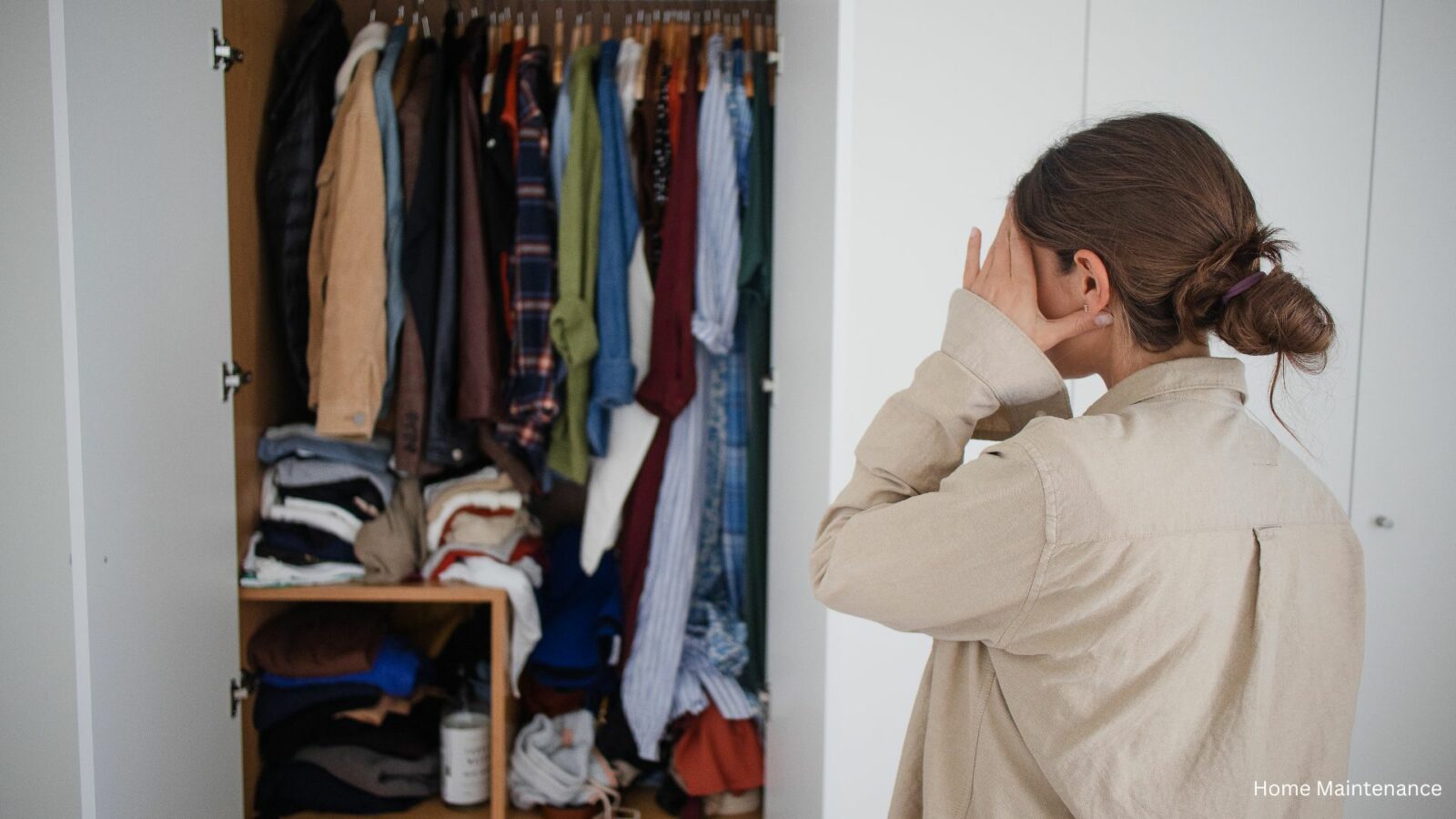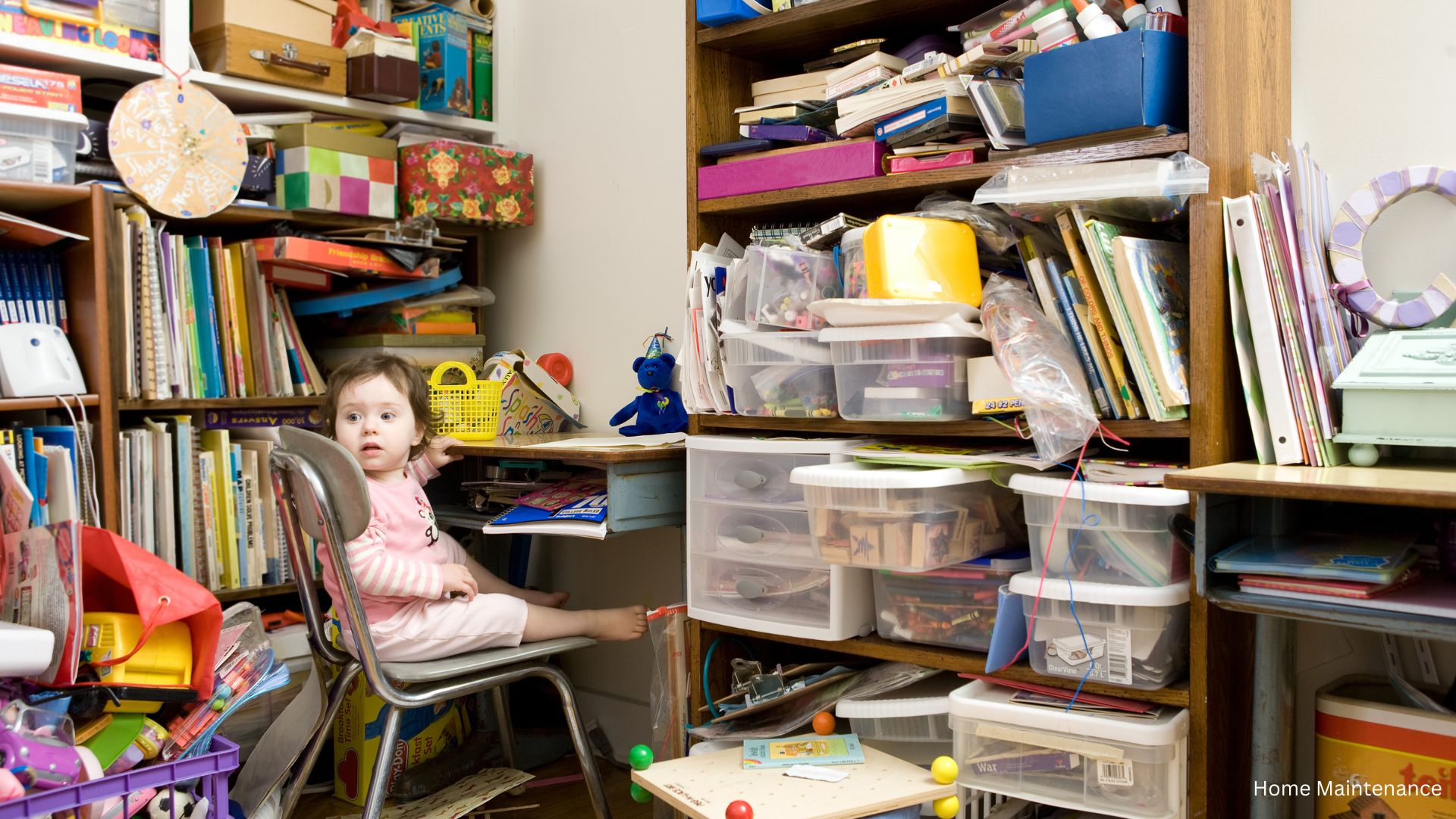If your home is filled with growing heaps of clutter you’ve moved from one place to another without organizing, you might be dealing with DOOM piles. The term “DOOM” stands for “Didn’t Organize, Only Moved,” and it has become a popular way to describe those chaotic piles that often represent more than just a mess—they can reflect mental and emotional clutter too. In this article, we’ll explore how to break free from the cycle of DOOM piles and reclaim your space.
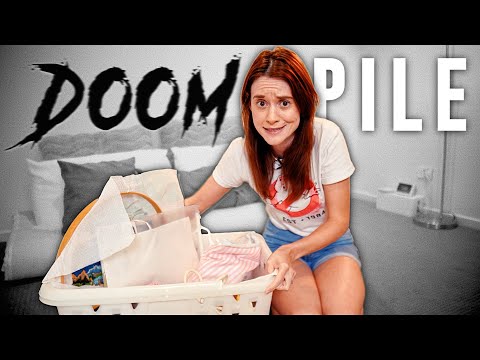
Why DOOM Piles Form
DOOM piles typically form when we feel overwhelmed or distracted. According to psychologist Michele Leno, busy lifestyles and stress are common triggers. When life gets hectic, it’s easy to let clutter accumulate without taking the time to properly organize it. Over time, these piles grow, making the idea of tackling them feel more daunting.
For some, especially those with ADHD, the task of sorting through a DOOM pile can feel impossible. Executive function issues, which make organizing and completing tasks difficult, can lead to procrastination and “ADHD paralysis,” where the mess keeps growing due to an inability to make decisions.
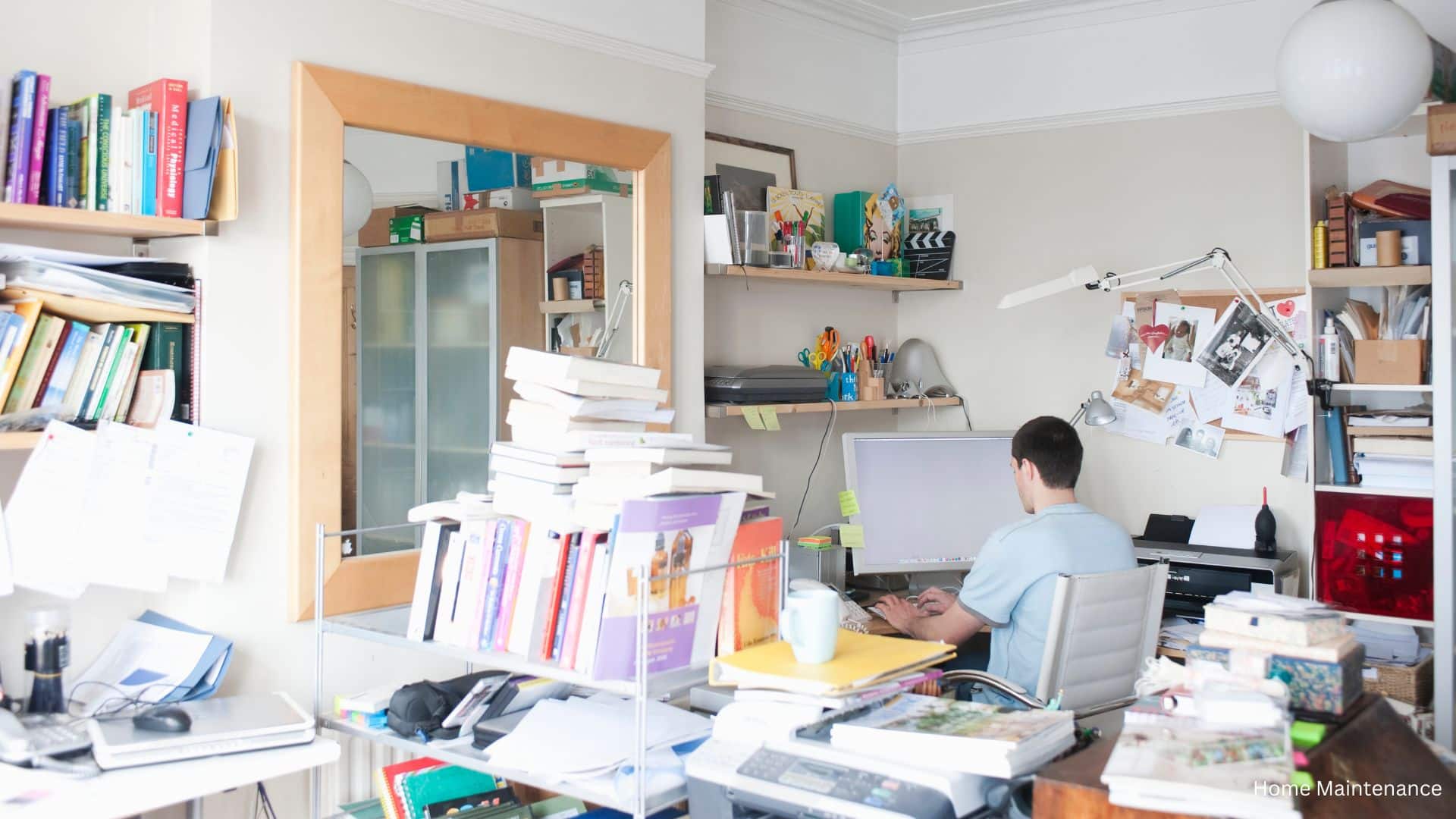
The Emotional Toll of DOOM Piles
Living with DOOM piles—those stacks of clutter you just move around without actually organizing—can sometimes weigh on you emotionally. While clutter itself doesn’t mean there’s something wrong, having a lot of it around can hint at underlying feelings of stress, anxiety, or low motivation. It’s like having a physical reminder of tasks left undone, and that can make it harder to relax or feel at ease in your own space.
The Mental Health Benefits of Decluttering
Decluttering isn’t just about creating a tidy space; it can actually boost your mental well-being. For one, clearing a DOOM pile can be a huge relief. When you finally tackle that mountain of random items and organize them, you’ll likely feel a real sense of accomplishment. That “I did it!” moment can release dopamine—a feel-good chemical in the brain—which can lift your mood and even motivate you to tackle more.
Small Steps for Big Impact
Decluttering doesn’t have to be a massive, all-in-one project. Taking it one DOOM pile at a time can lead to gradual improvements that feel more manageable. And with each step, you’ll likely feel a little lighter and more in control. The mental boost you get from organizing one pile can often motivate you to tackle another, creating a positive cycle of progress.
Tips to Clear DOOM Piles
Start Small
One of the most effective ways to break the cycle of DOOM piling is to tackle just one pile at a time. Select a manageable pile and focus on organizing it completely before moving on to another. This will help build momentum and prevent burnout.
Categorize Your Clutter
Sort the items into categories: trash, donate, or keep. Once you have everything divided, make sure each item has a designated place in your home.
Set a Timer
Particularly for those with ADHD, setting a timer for short intervals (like 15 minutes) can make organizing feel less overwhelming. Use the time to focus entirely on clearing out a specific pile, turning the process into a game.
Make a Maintenance Plan
Once your space is clear, create a system to prevent DOOM piles from forming again. This might include setting aside time each week for decluttering, or adopting the “one in, one out” rule: for every new item you bring into your home, remove an old one.
How to Prevent DOOM
To avoid future DOOM piles, make sure you stay proactive. Keep your clutter visible so you don’t forget about it, and set a specific date and time for putting items in their proper place. By stopping at one pile before it spreads, you’ll make it easier to maintain a clutter-free home.
- Keep Your Clutter Visible
Avoid the “out of sight, out of mind” trap by keeping your clutter in a visible spot until it’s organized. This prevents you from forgetting about it and letting it grow over time. - Set Specific Dates for Decluttering
Choose a day and time each week to organize your space. By sticking to a regular schedule, you’re less likely to let clutter accumulate into DOOM piles. - Designate a Space for New Items
Before bringing new items into your home, decide where they will go. This helps prevent the buildup of random items with no designated space. - Stop at One Pile
If you start noticing a DOOM forming, address it immediately before it grows into multiple piles. Tackling one pile at a time keeps the task manageable. - Develop a Maintenance Routine
Commit to a regular decluttering routine, such as spending 15 minutes each day or doing a “clean sweep” at the end of each week. This helps maintain a clutter-free home and prevents new piles from forming.
Tools and Apps to Manage DOOM Piles
If you’re looking to keep DOOM piles in check, there are plenty of digital tools and apps that make organizing easier and even a bit fun.
Clutterfree

Clutter-Free is an app specifically designed to help with decluttering. It offers a 30-day decluttering challenge that breaks down tasks into small steps, making the process feel a lot less intimidating. Each day, it suggests a new area to tackle and offers tips on how to get it organized. It’s like having a mini decluttering coach in your pocket!
Forest (Focus Timer)
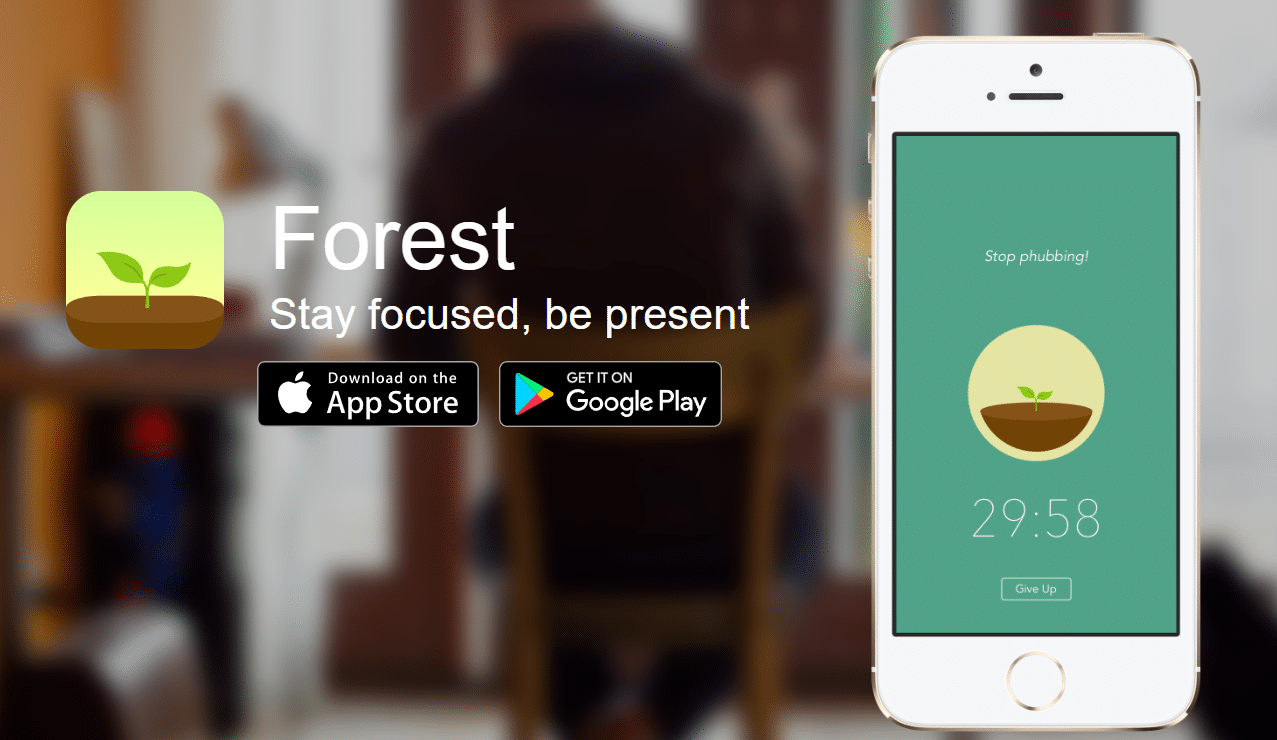
Forest is a focus timer app that uses a unique approach to productivity: as you focus on your task, you grow a virtual tree, and over time, you can cultivate an entire forest. It’s perfect for tackling DOOM piles in small bursts, especially if you find the task daunting. Set the timer for 15–25 minutes and commit to working on a specific pile during that time. It’s a fun way to stay motivated while managing clutter.
Habitica

If you enjoy games, Habitica turns organizing into an adventure. In Habitica, you create a character and set tasks that earn you experience points and rewards. As you complete tasks—like clearing a pile or setting up a regular decluttering routine—you level up your character. It’s a fun and creative way to turn organizing into a game, making it feel less like a chore and more like a quest.
Pantry Check

Pantry Check is an app designed to help you stay organized by tracking your food inventory, expiration dates, and grocery needs. It’s perfect for managing potential DOOM piles in the kitchen, where food items can easily pile up, expire, or get forgotten in the back of the pantry. With features like expiration alerts and a barcode scanner, Pantry Check ensures you know exactly what’s on hand, what’s about to expire, and what you need to buy. This proactive approach not only reduces food waste but also helps prevent clutter, making it easier to keep your kitchen streamlined and DOOM-free.
Get Rid of It

The “Get Rid of It” app is a great tool for tackling DOOM piles by helping you declutter in a minimalist, structured way. Inspired by the 30-Day Minimalism Game, the app motivates you to let go of items that no longer add value, which can prevent clutter from piling up around your home. With features like custom game settings, badges for achievements, and social sharing, you can stay motivated and track your progress. It’s a fun and supportive way to manage clutter and keep DOOM piles under control!
Frequently Asked Questions
1. Are DOOM piles a sign of hoarding disorder?
No, DOOM piling is not the same as hoarding. Hoarding disorder involves an inability to discard items regardless of their value, often leading to overwhelming clutter. In contrast, DOOM piles are usually temporary clusters of clutter created due to distraction or overwhelm, and they don’t necessarily reflect an attachment to the items.
2. How are DOOM piles related to procrastination?
DOOM piling often form as a result of procrastination. When tasks like filing, laundry, or tidying up are delayed, items tend to accumulate. Procrastination in this context is linked to the avoidance of organizing tasks, which may be seen as too time-consuming or mentally draining.
3. Can children or teens also create DOOM piles?
Yes, children and teens can create DOOM piles, especially those who struggle with attention disorders like ADHD. Parents might notice heaps of school supplies, toys, or clothes that keep getting moved around but never truly organized. Teaching kids organizational skills can help manage these piles.
4. Is there a difference between DOOM piles and doom boxes?
While similar, DOOM piles are clutter left in plain sight, while doom boxes involve placing clutter into containers with the intention of organizing it later. Doom boxes can seem like a solution, but they often just delay the process of addressing the clutter.
5. Can professional organizers help with DOOM piles?
Yes, professional organizers can help manage DOOM piles by creating organizational systems tailored to your specific needs. They can offer strategies to prevent future piles, ensuring that clutter doesn’t accumulate again.
Reclaim Your Space from DOOM Piles
Dealing with DOOM can be overwhelming, but by taking small, intentional steps, you can break free from the cycle of clutter. Remember that everyone experiences moments of disorganization, and it’s okay to ask for help if you feel unable to manage on your own. Whether it’s getting screened for ADHD, consulting a professional organizer, or just setting up a regular decluttering routine, the key to conquering DOOM piles is to take it one step at a time.
Related posts:
 Mortgage Rate Drop This Fall 2024: What Homebuyers Need to Know
Mortgage Rate Drop This Fall 2024: What Homebuyers Need to Know
 September Pending Home Sales See Biggest Increase Since 2023
September Pending Home Sales See Biggest Increase Since 2023
 Housing Market Vicious Cycle: An In-Depth Look at the Crisis Impacting American Homeownership
Housing Market Vicious Cycle: An In-Depth Look at the Crisis Impacting American Homeownership
 Florida Property Taxes: What’s Causing the Soaring Costs for Homeowners?
Florida Property Taxes: What’s Causing the Soaring Costs for Homeowners?
 Presidential Housing Policy: A Vision for Affordable and Accessible Housing in the U.S.
Presidential Housing Policy: A Vision for Affordable and Accessible Housing in the U.S.
